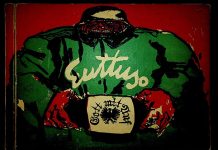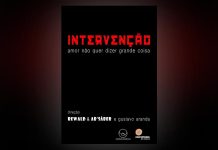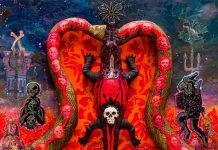
The sites of the battle have been marked for centuries and have been portrayed in epic tragedies in literature and art. And in this battle there has always been a sector of humanity that pulses for life and another that pulses for death.
We understand life as part of the defense of our civilization, respect for others, for nature, for the evolution of knowledge, science, for the appreciation of culture. On the other side, there is censorship, cancellations, untruths, catechization, living in excess, despite the lack of everything for the other.
With technology, what has changed is the way we see all of this, speed and its universal dimension.
This edition features several articles, interviews and reports that portray, from different angles, different forms of violence that are repeated and, at the same time, how art and culture, throughout history, dribble and play defense and attack, making repetition the place of the possible.
In Paradoxes of Repetition, psychoanalyst and writer Dominique Fingermann argues:
“There is no more eminently clinical subject for a psychoanalyst than the problem of repetition. The reason for so many laments, repetition seems to structure our own capacity to suffer, it can lead someone to engage in the experience of an analysis, it can become each person's most intimate hell. (…) Each analysis can access this turning point, that is, beyond its pathetic or tedious redundancy, extract the ethical scope of repetition. Because, if in psychoanalysis the phenomenon presents itself as a spoilsport, philosophy extracts from this paradoxical temporality something that returns, always current and unique, never past, art and music use their resources to produce the most new and surprising, and poetry plays with its rhythm to make use of its rhyme and its own pulse.”
We present, on pages 10, a historical correspondence between the father of physics, Albert Einstein, and the doctor and father of psychoanalysis, Sigmund Freud. These letters were published in 1933, in Paris, in English, French and German, under the title Why the War?
The reflections contained in them were part, almost a hundred years ago, of the discussions held at the forum of the International Institute for Intellectual Cooperation (IICI), founded in 1926, in Paris, which aimed to “strengthen collaboration between intellectuals of different cultures and nationalities, in order to create conditions conducive to the emergence of a new humanism, with the aim of supporting efforts for peace.” Germany, which was preparing for the immediate future of World War II, banned its publication.
This new edition focuses on conflicts to which we continue to be exposed: Fabio Cypriano addresses the Cultural Wars; Maria Hirszman recalls the 1964 Coup and its echoes, with an interview with historian João Cézar de Castro Rocha, who dedicated himself to examining the speeches of the extreme right in an attempt to understand the reasons for the contemporary movement.
Jotabê Medeiros writes about religious violence and brings a powerful testimony from filmmaker Luiz Bolognesie. In an interview with Fabio Cypriano, artist Mauricio Dias, from the duo Dias & Riedweg, also denounces catechizing violence.
The edition also features the visceral works of Maranhão artist Thiago Martins de Melo, a report by Leonor Amarante amid demonstrations by Mexican women defending their rights and cultural investments in Ceará – not only in Fortaleza, but also in Juazeiro do Norte and in Crato, with the construction of the Cariri Cultural Center. Initiatives that provide the necessary breath to continue moving forward. Good reading! ✱













